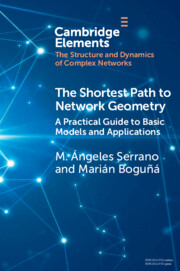Element contents
The Shortest Path to Network Geometry
Published online by Cambridge University Press: 02 December 2021
Summary
- Type
- Element
- Information
- Online ISBN: 9781108865791Publisher: Cambridge University PressPrint publication: 06 January 2022
References
- 14
- Cited by

